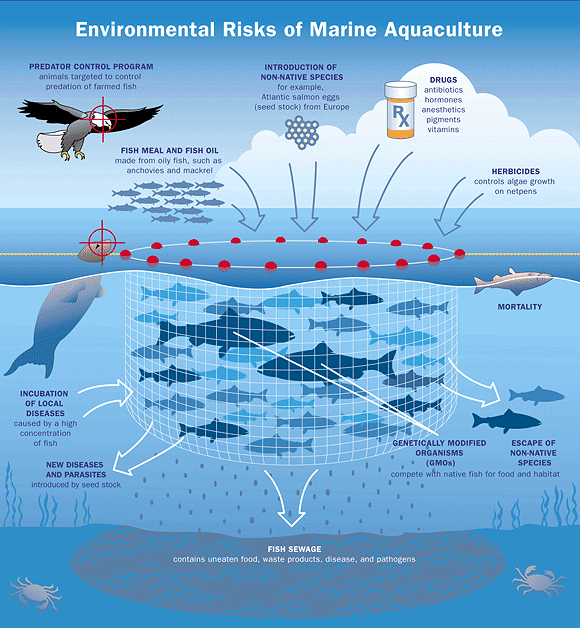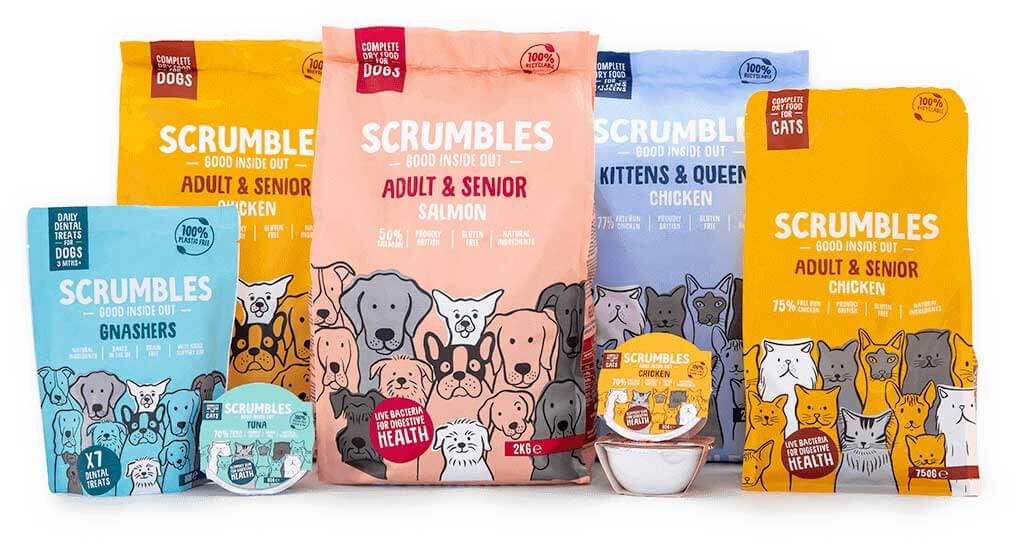Sustainable seafood
Good food shouldn't come at the cost of the earth we and our pets so dearly love. In our efforts to drive sustainability within the pet food industry, it's become apparent how difficult this task is, and how lots of sustainable efforts are not perfect solutions. We believe our pets deserve good food and that inevitably has an impact on the world around us. We make conscious decisions to opt for the more sustainable options and work closely with our suppliers and industry influencers to understand how to improve their sourcing to meet our requirements.
Transparency and responsible ingredient sourcing is at the core of what we do and we opt for sustainable certifications on our ingredients wherever possible. Meat and fish are the biggest ingredients we use and the ingredients with the biggest impact. Where possible the fish we use in our wet and dry food is either ASC certified, or MSC certified. In the most simplified form, these certifications exist to verify that the fish are from a certified sustainable source and will be available to all future generations. Read on to learn how these regulations help protect our oceans and fish stocks.

Why is sustainable fish sourcing so important?
Over the last 20 years there has been growing concern for the well-being of our oceans and natural fish stocks. A third of all commercially caught fish are being harvested at biologically unsustainable levels according to the UN Food and Agriculture Organization and 52% are fully exploited according to the FAO. Nation's whose own fish stocks have depleted below the levels of demand are trawling further out at sea or into other countries' territorial waters, and warming oceans caused by climate change are further threatening the collapse of immensely valuable ecosystems.
In the UK alone we consume £5.7 billion worth of fish and seafood each year, imported from more than 85 countries. Some might argue that in any form, the consumption of fish cannot be a sustainable practice, however others see fish and seafood to have great potential to be a renewable resource. Using sustainable fisheries management, and placing responsibility on stakeholders at every stage of the supply chain from farm-to-table is crucial to achieve this. Certain independent non-profit organisations therefore exist working to regulate practices and set standards for sustainable fishing, the two we'll be focusing on today are the MSC and the ASC.
MSC
What does it stand for?
Marine Stewardship Council
What is the MSC?
An international non-profit that protects oceans and safeguards wild capture fisheries. One of the ways it does this is via the MSC Standards which they set out, with best practise codes and guidelines that companies must abide to in order to certify. Examples of wild capture fisheries include pots, trawl and long line. If a product is labelled as MSC certified, you should feel assured it is from a certified sustainable source.
What are the pros and cons of wild capture fisheries?
For fish to be labelled as MSC it must be wild, rather than farmed. However, there are lots of debates around which of these is actually more sustainable. According to some research wild capture fish differs nutritionally due to their vastly different diet and lifestyle. Wild fish can be leaner, lower in calories and lower in fat. We'll discuss the wild vs farmed debate in more detail later on. The major concern with wild fish is the depletion of wild fish stocks and the subsequent impact on marine ecosystems and other species. In line with this, fishing boats are also often having to travel further on their trips as the remaining shawls are moving into deeper waters, thus burning more fuel often fruitlessly.
What are the main principles of the MSC Standard?
- Principle 1 Sustainability of the stock – fisheries must be operated without overexploitation of resources, so they are available indefinitely to future generations.
- Principle 2 Ecosystems impacts – fishing operations must be managed to maintain the structure, productivity, function and diversity of the ecosystem that the fisheries depend on.
- Principle 3 Effective Management – all fisheries must meet local, national and international laws and have effective management systems in place.
Which of our ingredients are MSC certified?
All of the tuna we use in our wet cat food is MSC certified.
How are MSC fisheries scored?
There are 28 performance indicators in the Fisheries Standard which sit under the previously mentioned principles. Each fishery is therefore assigned a score for each indicator. 60 is the minimum acceptable performance to certify as MSC, 80 is global best practise and 100 is near perfect, and fisheries must also score an average of 80 across all indicators to certify.
Is wild fishing better than aquaculture?
Due to the predicted global growth in population requiring the doubling of our current food production by 2050, wild capture fishing alone would not be able to meet this demand. Currently just over half of the fish we consume globally is from aquaculture, but the World Bank estimates this will need to rise to two thirds by 2030 to meet demand. Aquaculture provides a continuous and more reliable food supply, as well as being more flexible in its location, as it can exist in oceans, freshwater, artificial ponds, rivers and even on land. However, much like with land-based farms, poorly managed aquaculture systems can result in the further destruction of marine ecosystems as a result of escaping non-native species, contamination of water by fish sewage and incubation of local diseases to name a few. On top of this a recent report shed light on farmed fish being fed on fish meal and fish oils from wild fish, thus blurring the potential benefits.

ASC
What does it stand for?
Aquaculture Stewardship Council
What is the ASC?
The ASC is very similar to the MSC, with the major difference being that rather than safeguarding wild capture fisheries, the ASC safeguards aquaculture practises that involve farmed fisheries. Examples of farmed acqualture fisheries that can be considered for ASC certification include caged, pond and recirculation.
What are the main principles of the ASC?
- Principle 1 – The fishery must operate legally and apply effective business management
- Principle 2 – the fishery must operate in an environmentally responsible manner
- Principle 3 – The fishery must operate in a socially responsible manner
Which of our ingredients are ASC certified?
The salmon in our wet dog and cat food, as well as the salmon in our dry cat and dog food (which is also Certified Organic).
How do our ASC fisheries perform?
Just like with MSC, the ASC has a set of standards which set the strict requirements for responsible farming. These are currently being redeveloped into the ASC Farm Standard, which are set to cover 12 species groups of fish in five differing farm culture systems and the processing plants, as well as a new Feed Standard.
Farmed Vs Wild Fish
One of the greatest debates when it comes to sustainable seafood arises in relation to whether farmed or wild fish are more sustainable. Poor wild fishing practises can be as negative as poor farmed fishing practises and vice versa.
Not all fish are equal
Besides from being able to choose between farmed and wild caught fish, we can also choose which species of fish to use in our food based on its sustainability. To assess whether the species we are using meet our requirements the MSC publishes an annual Good Fish Guide which we use to make the right choices. This guide rates each fish from red to green, according to the sustainability. For the first time this year the MSC has also included ASC certified salmon in their guide, awarding it a green ‘Best Choice’ rating for sustainability
A final point
This blog has really explored the ASC, MSC, wild and farmed fish from a human food perspective. As an ethically-minded pet food company we've made informed decisions about which species of fish we use, where it's from and which parts we use to ensure our pets are not only getting the best quality, but that it's not at the cost of our oceans. All our suppliers must meet all our strict ethical guidelines before we choose to work with them.
As part of these requirements we've chosen to never use fish that is in direct competition with our own human food supply chain. Rather we use the bits of fish left on the heads, tails and bones that aren't 'aesthetic' enough for human sale and would otherwise go to waste. In 2020 alone we've helped save 14 tonnes of fish being chucked straight into landfill. This also means that the fish we use is never caught or farmed with the intention of being used in our recipes as we are a secondary user.
Hopefully this blog has given you some fish for thought. We are currently working on our annual impact report which we will share with you shortly. We're passionate about reducing our environmental paw print, and welcome your ideas. Drop us a line hello@scrumbles.co.uk









